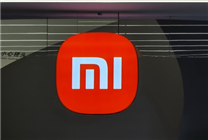Xiaomi Faces Rising Costs Amid Increased Memory Prices
Summary:
- Xiaomi’s Q3 2025 financial report highlights the significant impact of rising memory costs on device pricing.
- Company president Lu Weibing emphasized that increasing mobile phone prices cannot fully counteract these cost pressures.
- The upcoming rise in chip prices from TSMC is expected to further escalate costs for flagship mobile devices.
On November 18, Xiaomi unveiled its third-quarter financial report for 2025, revealing a pressing concern for the tech giant as it navigates significant cost pressures across its product lines. During the earnings conference call, Lu Weibing, a pivotal figure at Xiaomi Group, voiced the challenges faced in combating the relentless rise in memory costs, stating, "Increasing mobile phone prices cannot completely offset the pressure caused by soaring memory costs."
This sentiment reflects a broader industry trend as rising operational costs extend beyond Xiaomi. In a candid post on Weibo earlier in October, Lu articulated, "The cost pressure from upstream has been truly transmitted to the pricing of our new products." This assertion underscores the realities of global supply chain dynamics that the company cannot control. The surge in memory costs has been notably more pronounced than anticipated and is projected to intensify, placing additional financial strain on electronics manufacturers.
Industry observers are echoing Lu’s concerns. Influencer @digitalchatstation shared insights on Weibo, highlighting the severity of memory price hikes. The ripple effect from supply chains to consumer markets is expected to result in significantly elevated prices for large storage products. This observation aligns with market forecasts indicating an upward pricing trend in essential tech components.
Further compounding these challenges, recent reports indicate that TSMC, a leading semiconductor manufacturer, has communicated to its major clients, including industry giant Apple, about impending price increases for chips utilizing processes below 5nm. Starting in 2026, these increases could range between 8% to 10%. Such changes are poised to further drive up the costs associated with flagship mobile phones, compounding the challenges Xiaomi and its competitors face.
The implications of escalating costs are far-reaching. For consumers, this could translate to higher prices for smartphones and other tech devices, as manufacturers seek to remain profitable amid growing expenses. For companies like Xiaomi, adapting to these market pressures will require strategic pricing and possibly re-evaluation of product offerings to maintain consumer interest without sacrificing profitability.
With memory and chip prices poised to rise significantly, Xiaomi, along with other players in the technology sector, will need to closely monitor these developments and adapt their strategies accordingly. As the market continues to evolve, staying ahead of cost fluctuations will be critical for maintaining competitive advantage and meeting consumer expectations.
In summary, Xiaomi is grappling with unprecedented cost pressures driven by rising memory prices and upcoming chip price increases from TSMC. The company’s leadership emphasizes the need for strategic responses to these challenges, ensuring that they can continue to innovate while navigating the complexities of the global supply chain. As the situation unfolds, it will be crucial for both Xiaomi and consumers to remain vigilant and adaptable in this rapidly shifting landscape.








